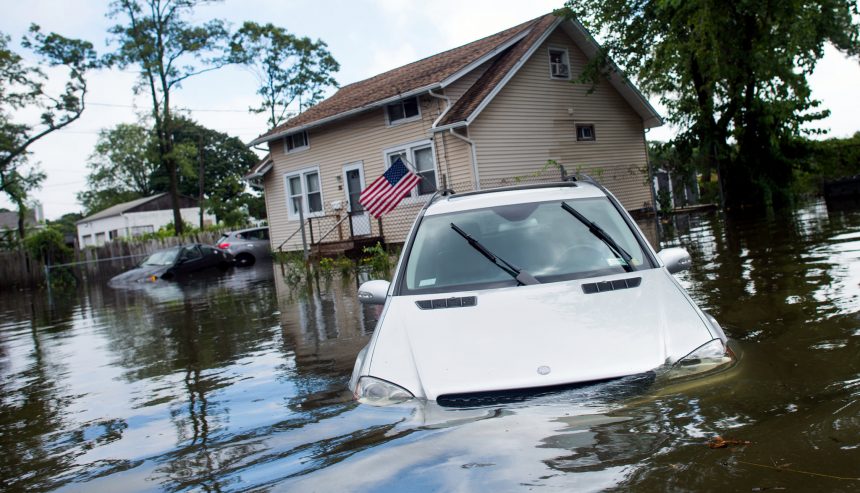Living on Long Island offers a mix of coastal beauty, vibrant communities, and classic neighborhoods—but it also comes with its fair share of challenges, especially when it comes to water damage. Whether it’s a slow roof leak, a burst pipe, or flooding caused by severe weather, homeowners in Suffolk and Nassau County are at heightened risk due to the region’s infrastructure, weather conditions, and proximity to the ocean.
At PuroClean of Huntington, we specialize in addressing water damage unique to Long Island properties. Here’s what you need to know to protect your home and what to do when water intrusion occurs.
Why Long Island Homes Are Prone to Water Damage

Several regional factors contribute to the high frequency of water damage across Long Island:
Coastal Weather Patterns
Long Island is especially vulnerable to coastal storms, hurricanes, and Nor’easters. These weather systems bring intense wind and rainfall that can flood basements, overwhelm sump pump systems, and cause roof damage that leads to interior leaks. Towns along the North Shore—like Huntington Bay, Centerport, and Cold Spring Harbor—often see storm surge-related damage.
Aging Housing Stock and Infrastructure
Many homes throughout Huntington, East Northport, and Dix Hills were built decades ago and still rely on original plumbing, older roofs, and outdated drainage systems. As these systems age, the risk of pipe bursts, foundation seepage, and appliance failures increases.
Freezing Winters and Sudden Thaws
Suffolk and Nassau County experience dramatic temperature swings in the winter. Frozen pipes in uninsulated basements or crawl spaces can burst, releasing hundreds of gallons of water. Sudden thaws also lead to saturated soil and water infiltration around foundations.
Localized Flooding and Poor Drainage
Some areas, such as Melville, Greenlawn, and Commack, contain flat terrain or poorly maintained storm drains, making them more susceptible to pooling water during heavy rains. This often results in basement flooding or water intrusion under floors.
The Consequences of Delayed Water Damage Response

When water damage is not addressed quickly and properly, it can lead to long-term and expensive consequences for property owners. While minor leaks may seem harmless at first, they often hide more serious problems within walls, insulation, and flooring. Here’s what can happen when water damage is left untreated:
- Mold Growth: Long Island’s high humidity, especially during the spring and summer, accelerates mold development. Mold can form in as little as 24–48 hours and spread quickly behind drywall and cabinetry.
- Structural Damage: Prolonged exposure to moisture weakens wood framing, drywall, and flooring. This compromises your home’s integrity and can lead to sagging ceilings, warped subfloors, and costly repairs.
- Electrical and Fire Hazards: Water can infiltrate electrical outlets and fixtures, increasing the risk of short circuits or even electrical fires. This is especially dangerous in older homes that may not have GFCI protection.
- Increased Repair Costs: The longer water damage goes unresolved, the more extensive the restoration becomes. What could have been resolved with drying and minor repairs might escalate to full demolition and reconstruction.
- Insurance Claim Challenges: Waiting to address damage can complicate the insurance process. Insurers may deny or reduce coverage if they determine that the damage worsened due to inaction.
Prompt, professional mitigation is essential—and the earlier it’s addressed, the more damage can be prevented.
What to Do Immediately After Water Damage Occurs
If you’re a homeowner in Suffolk or Nassau County and you notice signs of water damage—whether from flooding, a burst pipe, or roof leak—take these steps right away:
1. Identify and Stop the Source
If the damage is coming from a known plumbing issue, shut off your water supply at the main valve. If it’s from weather intrusion, contain the area as best as possible by using towels or plastic sheeting to redirect water away from valuables or electrical areas.
2. Prioritize Safety
Do not walk through standing water if there’s any chance of electrical hazard. Avoid using outlets, appliances, or switches in affected areas. If you suspect contamination from stormwater or sewage, vacate the area entirely.
3. Document Everything for Insurance
Take clear photos and videos of all affected areas, damaged belongings, and visible water sources. These will support any future insurance claims and speed up the process.
4. Avoid DIY Drying
While it may be tempting to set up fans or shop vacs, these tools don’t remove moisture trapped in walls, baseboards, or subflooring. Improper drying can worsen mold problems. Instead, contact professionals with the right equipment and training.
5. Call a Local Restoration Specialist Immediately
Contact a certified local company like PuroClean of Huntington. We use commercial-grade drying systems, moisture detection tools, and proven antimicrobial applications to eliminate damage quickly and thoroughly.
Serving Long Island with Trusted, Local Water Damage Restoration
PuroClean of Huntington is proud to serve residential and commercial clients throughout Suffolk and Nassau County, including:
- Huntington
- Dix Hills
- Melville
- Northport
- Greenlawn
- Commack
- East Northport
- South Huntington
- And surrounding communities
We’re based right here on Long Island, which means we understand the local climate, building styles, and water damage risks better than anyone else.
For immediate assistance, call 631-402-9700 or visit website. Our technicians are available 24/7 to respond quickly and begin the restoration process.



